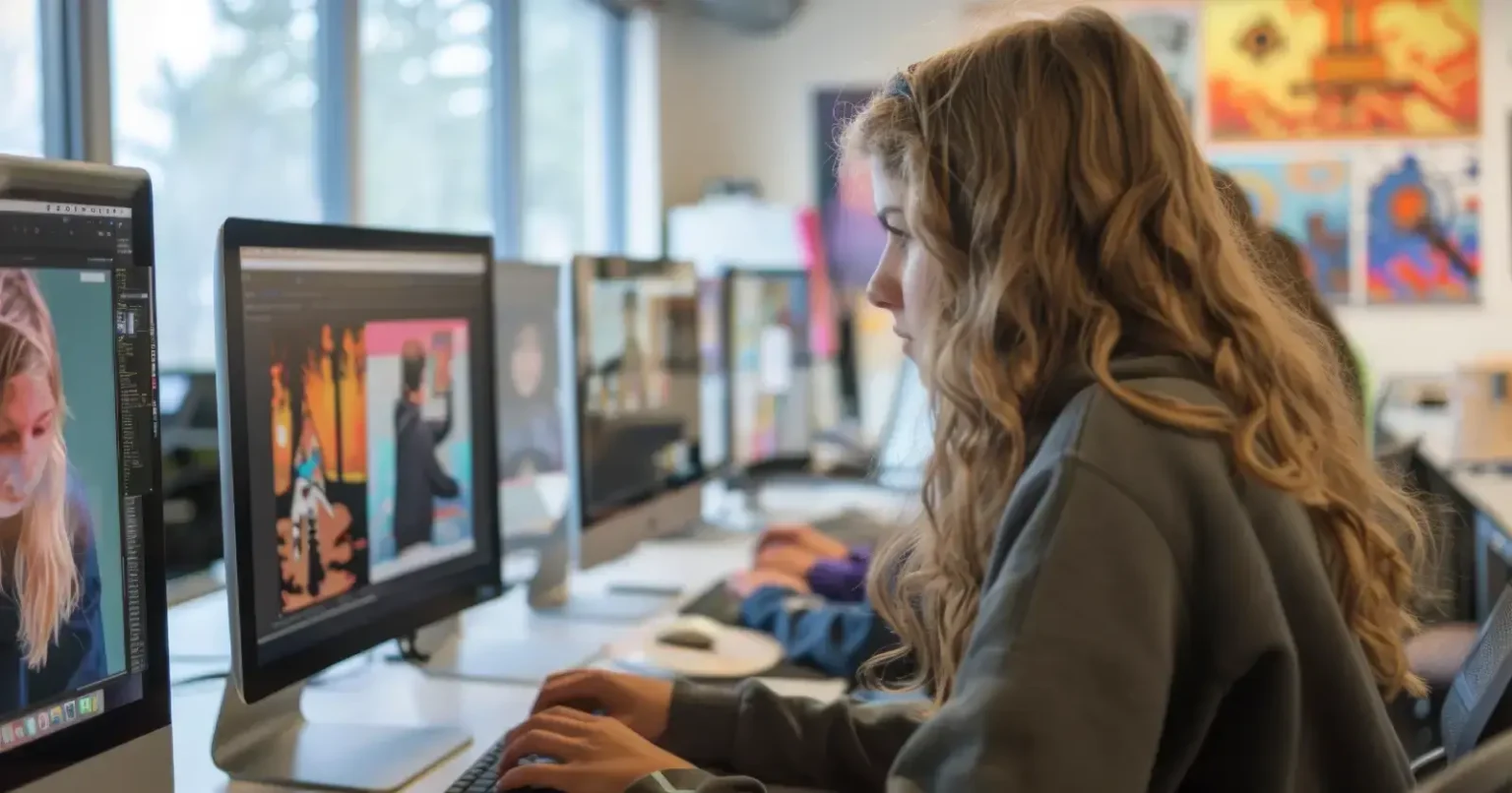Why a Graphic Design Program Matters from Day One
A graphic design program is more than just learning software or turning in assignments. Whether you’re just starting out or switching careers, your graphic design school portfolio becomes the first true reflection of who you are as a creative.
It’s where design thinking, creativity, and technical skills come together to shape real careers.
Back when I enrolled in my first design course, I didn’t even know what a “layer mask” was in Photoshop.
But by the end of that semester, I was helping local coffee shops rebrand with fresh menus and custom logos.
The transformation was real—and fast.
That’s the power of structure, mentorship, and repetition in a guided creative environment.
More Than Just Software: It’s a Creative Mindset Shift
Most people think graphic design is just knowing how to use Adobe Illustrator or Photoshop.
That’s barely scratching the surface.
Design school rewires your thinking.
Suddenly, you’re breaking down brand stories, decoding typography choices, and finding color palettes that speak louder than words.
It’s less about what button to press, and more about why you’re pressing it.
Your eye sharpens.
Your intent becomes clearer.
And your creative process finally has a workflow.
Here’s where a graphic design program can change everything—it gives you consistent feedback, real client-like briefs, and a chance to fail forward in a safe space.
Building Your Portfolio as You Go
One of the best things about attending a design school is that your portfolio doesn’t start after graduation—it builds with every project. Each assignment, critique, and collaboration adds depth to your graphic design school portfolio, helping it evolve into a showcase of your skills, thinking, and creative growth over time.
In my second quarter, we were assigned to redesign packaging for a product we hated.
I chose canned tuna.
Let me tell you—it’s hard to make fish look appealing.
But by the end of that project, I had a full layout with mockups, branding guidelines, and shelf appeal that made it into my final portfolio.
That tuna label landed me my first freelance gig.
Real Clients, Real Pressure—Real Growth
A solid design program doesn’t keep you in the classroom bubble.
You get to work on real-life briefs from nonprofits, startups, or community groups.
I still remember the pressure of presenting to a board of directors from a local art center.
They didn’t hold back.
But that’s what prepared me for the fast-paced feedback loop of agency life.
You learn how to defend your design decisions without getting defensive.
That’s a skill you don’t get from YouTube tutorials.
Storytelling Through Design: A Skill You Didn’t Know You Needed
Good design tells a story.
That might sound cheesy, but it’s the foundation of effective visual communication.
You’re not just choosing fonts—you’re creating a voice.
You’re not slapping on colors—you’re guiding emotions.
A structured curriculum teaches this without making it feel forced.
In fact, one of our instructors had us design a campaign for a fictional airline.
Everything from the logo to the in-flight safety card had to tie into one cohesive message.
That kind of project trains your brain to design with narrative and intention.
Collaboration Beats Competition
A surprising perk of a formal program is the studio environment.
You’re not just working alone—you’re brainstorming, pitching, and revising alongside peers.
It’s collaborative, not competitive.
You learn how to accept critique, offer it constructively, and revise without ego.
In the real world, no designer works in a vacuum.
That classmate who helped you troubleshoot a vector path? Could be your future colleague or art director.
Tools, Trends, and Tech: Always One Step Ahead
Design programs are constantly updating their curriculum to match industry trends.
While online courses can go stale, schools work with industry pros to ensure what you’re learning reflects the current market.
We were experimenting with Figma long before it became mainstream. Back then, debates like Photoshop vs Figma were already heating up, and we knew which side we were on.
By the time I hit the job market, I didn’t just know how to use it—I had completed full design systems in it.
That kind of readiness is what employers notice.
Preparing for the Job Market—Not Just Graduation
One thing often overlooked is how graphic design schools help you market yourself. From refining your resume to curating a strong graphic design school portfolio, you’re not just graduating with skills—you’re graduating with a story employers want to see.
From resume design to mock interviews to networking with guest speakers, it’s about building your brand as a designer.
Our final semester included a portfolio review night with actual recruiters.
Terrifying? Yes.
Worth it? Absolutely.
That’s where I made the connection that led to my first agency job.
And I wasn’t alone—over half my classmates got interviews that night.
You’re Not Just Learning Design—You’re Becoming a Designer
It’s easy to think you’ll “learn as you go” or teach yourself via tutorials.
And sure, that works for some.
But a formal graphic design school gives you the discipline, structure, and creative challenges that accelerate your growth.
It’s the difference between knowing the tools and using them like a pro.
When you’re immersed in design thinking every day, surrounded by peers, mentors, and real-world challenges—you change.
You stop doubting your ideas.
You start trusting your instincts.
You develop a voice.
That’s what makes your portfolio not just full—but unforgettable.


